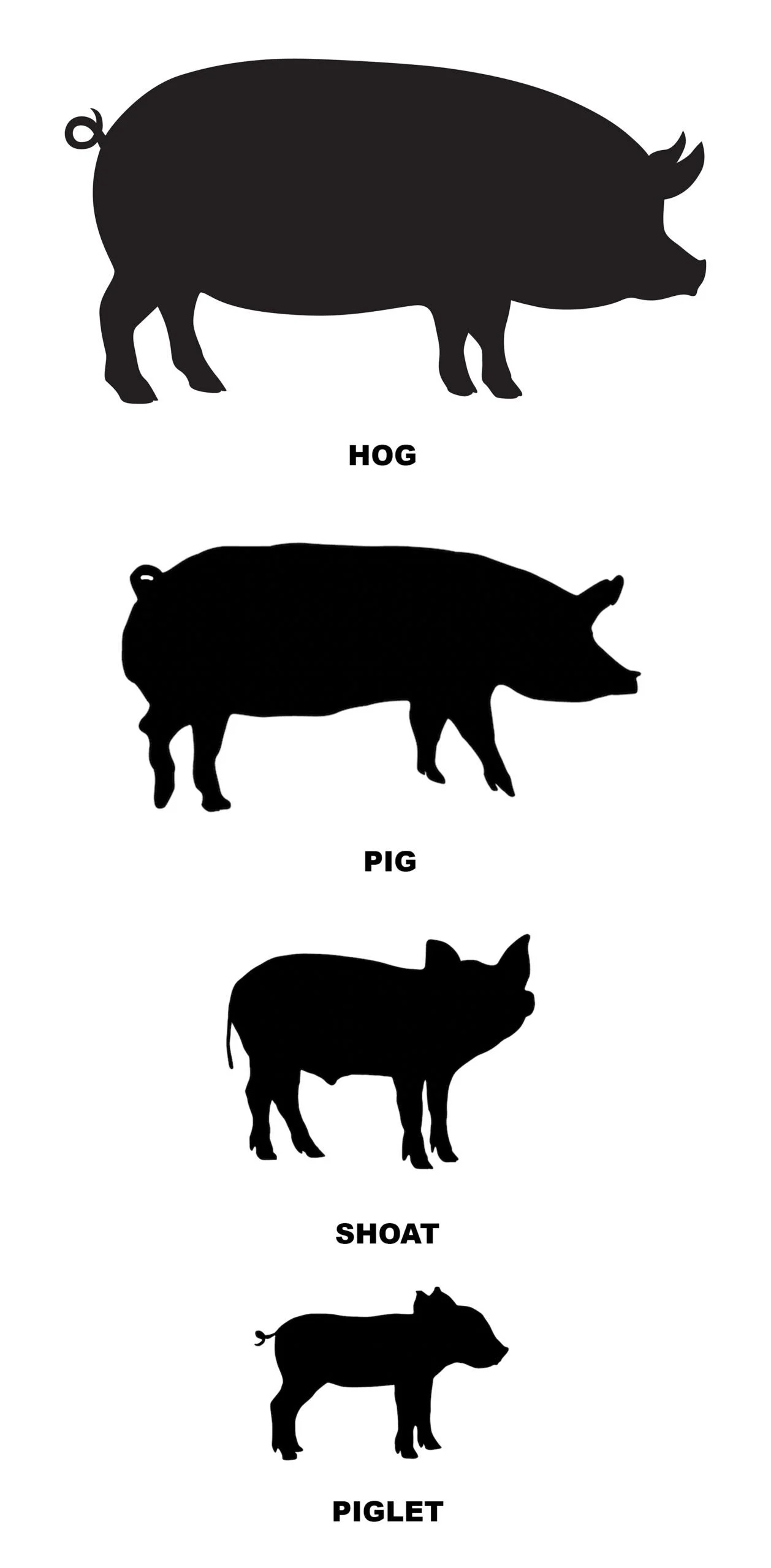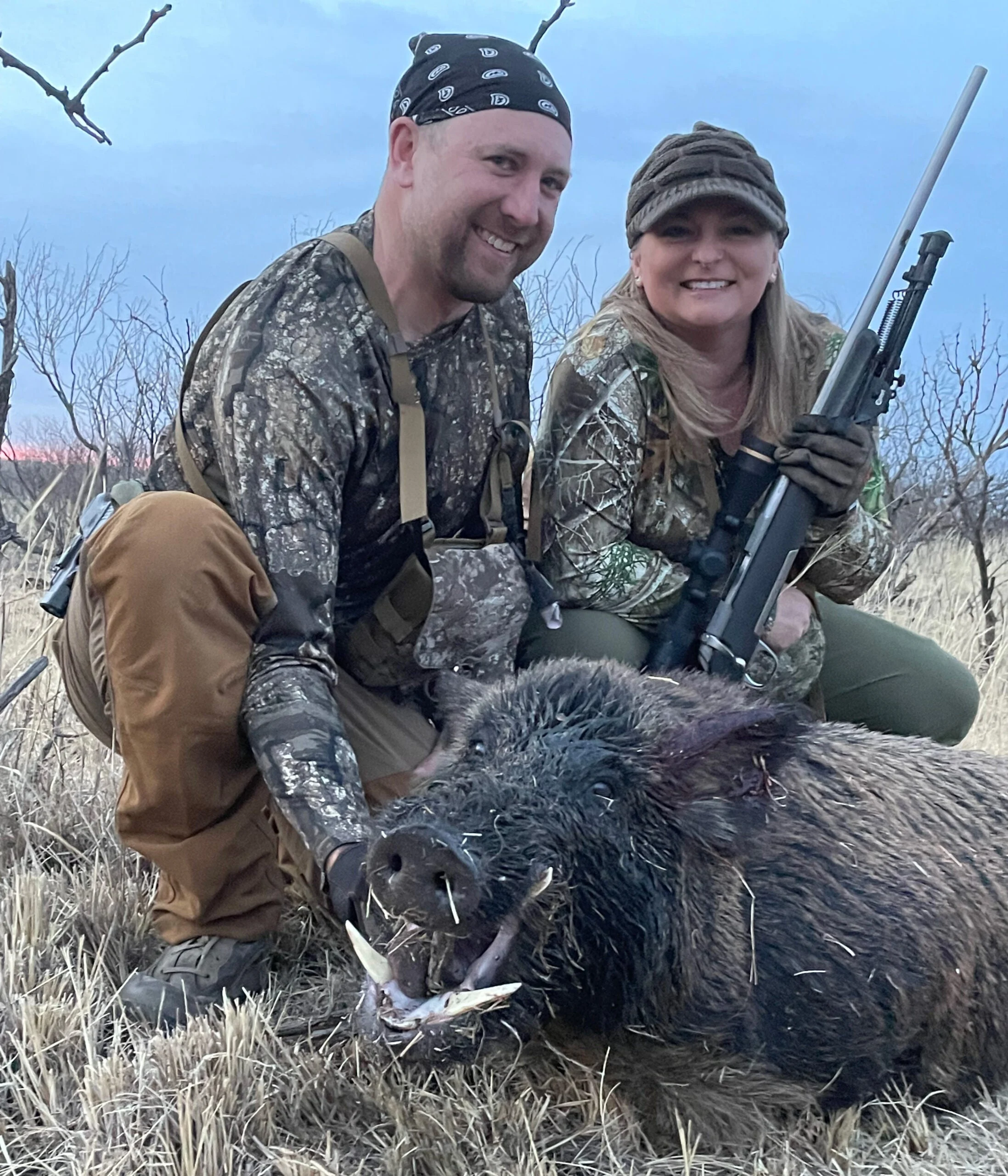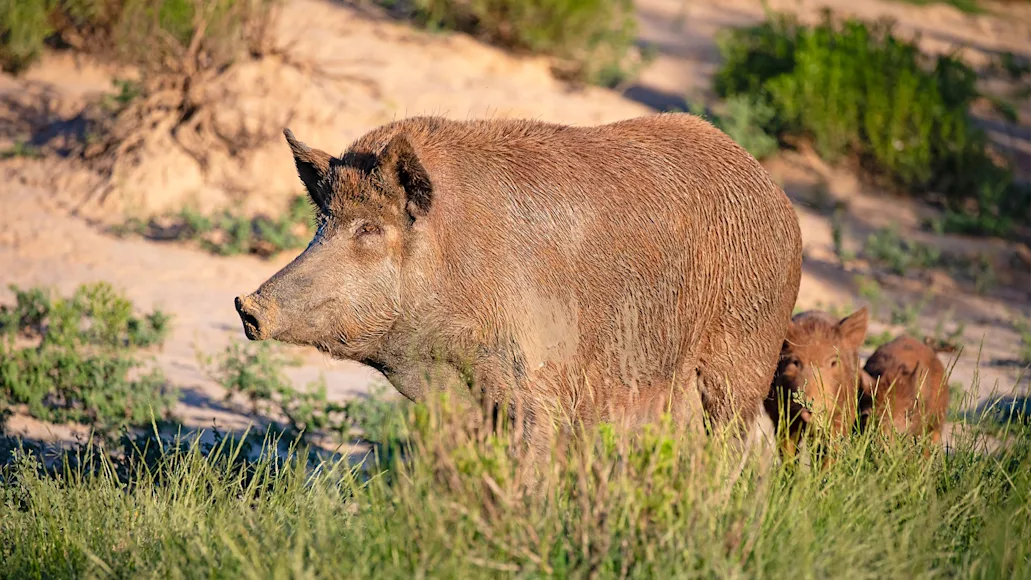In addition to being one of the world’s worst invasive species and the vectors of several terrible diseases, feral swine also have names that are insults. Being called a “pig” is not exactly the same as being called a “hog,” but it’s safe to say that you don’t want to be called either. When it comes to the animals themselves, you’ll hear hunters using both terms to refer to feral swine. So, are the words interchangeable? Technically, no. But whether you actually say “pigs” or “hogs” when you’re hunting the animals
depends on the situation. So, here’s a breakdown: pigs vs hogs.
The Technical Difference
There may not be a better source for verifying livestock lingo than the Old Farmer’s Almanac
, which simply says that when it comes to pigs vs hogs, the difference is one of size and maturity. Hogs are the mature ones, 3 years old or older and weighing in excess of 120 pounds. There are sow hogs and boar hogs, and first-graders should be able to understand the difference in those without further explanation.

Adobe Stock / Field & Stream
Then you have pigs, which are younger than 3 years old and weigh less than 120 pounds. If you’re sitting in a tree stand looking to procure some wild pork for the table, a pig—boar or sow—of about 100 pounds is just what you want. Smaller yet are shoats, which are young pigs that are just weaned—typically 25 to 40 pounds—and then piglets, which are the cute little buggers in tow behind most sow hogs that oink constantly and fit nicely on the rotisserie of your average propane grill.
Pigs vs Hogs: The Jargon Difference
What hunters call feral swine, however, has more to do with situation at hand. Most of the time, having feral swine around is a bad thing for hunters. And when you want to express your displeasure with feral swine, as a group, you’re apt to call them pigs. For example, when you find your newly planted food plot rooted up and stinking, or when your expensive deer feeder is laying on its side, smashed and void of corn, you say, “Dammit, there’ve been pigs in here.” Same goes for when the buck of a lifetime is about to step into your best shooting lane but is suddenly spooked by the sound of guttural grunts in the brush and leaves, never to be seen again. As the sounder trots into view, you’re apt to say something like, “&%$#@$& pigs!”
But sometimes you’re actually hunting these animals, and despite knowing all the ills caused by the species, you would like to see one standing still long enough to take a shot at it. In that case, the lingo more or less matches what the Almanac says. When you see a big sounder, you collectively call them pigs, as above, because those sounders are almost always comprised of a sow or two and their litters of pigs, shoats, and piglets. I’ve seen sounders of 30-plus animals, but eight or 10 is most common. It’s pretty easy to condition sounders to visit timed feeders, so sows and smaller pigs comprise the majority of what hunters shoot on stand.

The author shows off a boar hog taken by his wife, Michelle, in West Texas. Will Brantley
A big boar hog are another matter. Every pig hunter wants to shoot a hogzilla with gnarled tusks, even if the novelty of it wears off shortly after the skinning commences. Those big boars are almost always called hogs, and with some reverence to boot.
Unlike most game species, hogs breed year-around, throwing up to two litters per year. Because of that, the mature boars are solitary animals that spend most of their time looking for the next receptive sow. Boar hogs will visit bait sites, but as a rule, they’re much more difficult to pattern around timed feeders. Most of the big boar hogs I’ve taken have been targets of opportunity. And when they’re down, it’s customary to say something like, “Holy $&@#, look at the cods and cutters on that boar hog!”
“Boar pig” just doesn’t have the same ring, does it?






